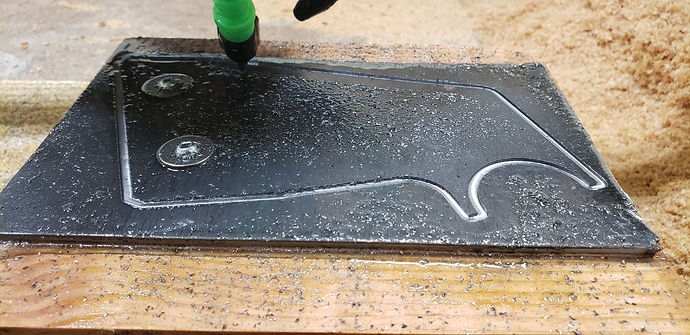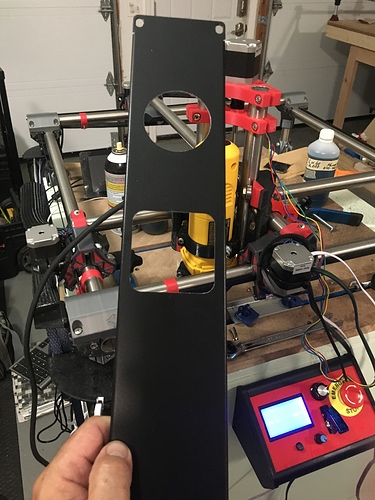definitely haven’t got this figured out yet. But its cutting.
So from big Aluminum parts…to steel. I think have as good a grasp on this as any of us!
No, I keep breaking things.
I cant figure out the best transitions between z steps. Helix seems to be hit or miss, plunge also sometimes works. Neither are ideal though.
Slow, is the only advice I have for plunging, if you have to do it. You can always come in from the side, not using a plunge in the material at all.
It seems like a ramp causes excess chatter.
Maybe I should stop trying to machine metals on this one until its updated to the primo (still printing parts)
The other one the spindle comes tomorrow at least
I was not happy with my plunges on this one either. https://www.youtube.com/watch?v=1CX3qui0-Yo I think pre drilling and not plunging are key unless you get an endmill that is rated for plunging into steel. Even on bigboy mills a lot of people do their best to come in from the side or drill then tool swap (from what I have seen).
Guess I would have to figure out a way to do that
Let it chatter it’s first pass, then drill a hole where it started.
Might be valid way to do it
I was going to say the same as Barry. Use a ramp and let it chatter first pass, do a roughing pass with the chatter, then do a finishing pass. The finishing pass should be able to come straight in from the side and not have to ramp.
What CAM and controller are you using?
What about finding the coords of the starting point of each part and creating a separate gcode file that just marks the surface at each of those points? Then drill them in place by hand, then run the regular gcode. Lead-ins would be handy here. This could be automated.
I feel like now we are getting into the “overthinking” territory. I guess I need to play with it some more and report back. I had to throw the towel in on these parts and order them laser cut. Once my damage exceeded $45, I was done.
Not for good, just for now. lol
I was successful cutting Steel with my Primo, here is a short video of it. you really need to go slow.
Did you use the reguler single flutes, similar to the ones from Ryans shop? Did they wear out quickly?
Yes i did, I was able to cut 2 holes with 1 bit, I had 5 plates to make, try to start the second plate and not even 1/4 of the way on the 1st hole on the second plate the bit was gone.
I wonder what flutes would work well on steel for these machines of ours…
Oddly Kevin recommended I try the two flute and it worked much better for me. I really have not spent all that much time trying to dial it in though.
I Have another project coming up in couple of weeks. I will try a two flute.
I was running my spindle around 18k rpms and found that at that time, 5 flutes cut the best. I damaged my 5 flute when the work piece let go, and anything else I tried after that didn’t last very long.
I have a couple kyocera 4 flutes that showed up today, but I won’t be reporting on them for a bit yet.
Should be easy peasy! I’m happy to help if you decide to try it again… I just wrote a series of automation scripts for work which is not in my job description so maybe I’m a little jazzed up about it right now ![]()
Drilling pilot holes is something Ill have to do with the plasma cutter when the material is too thick to pierce. Linuxcnc has a mode that you can use that just runs around and marks where to drill before executing the cut, so same idea.

